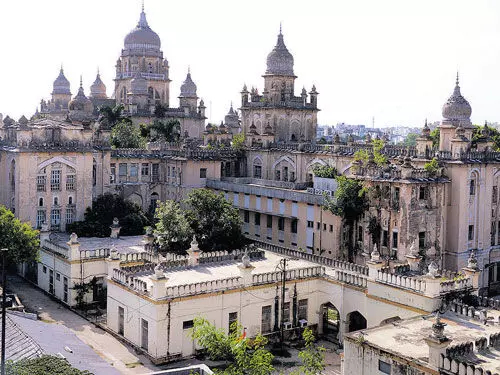Historians divided over KCR govt’s decision to demolish Osmania General Hospital
This decision has been met with petitions and PILs both in favour and against it. However, the government has now put an end to the uncertainty surrounding the future of OGH by confirming its intention to demolish the existing structure and construct a new one.
By Nikisha Uddagiri
Hyderabad: The Telangana government has decided to demolish the existing building of Osmania General Hospital (OGH) to make way for a new and modern hospital structure. The state government submitted an affidavit to the Telangana High Court on July 27, officially announcing their plans for the demolition.
The government cited safety concerns as the main reason behind this crucial decision. According to them, the current OGH building is deemed unfit for providing proper patient care, necessitating its removal along with other satellite structures. The new OGH building will be constructed in an extensive area covering 35.76 lakh square feet.
The decision to demolish the building was made during a meeting attended by ministers Mahmood Ali and Talsani Srinivas, Hyderabad MP Asaduddin Owaisi, and officials from the health department, GHMC, MA&UD, R&B, as well as OGH representatives.
Controversial decision
The OGH has been facing controversy regarding its structure since July 23, 2015, when Telangana CM K Chandrashekar Rao expressed concerns over patient safety due to the deteriorating state of the building. He later announced a plan to replace it with a modern hospital, allotting a grant of Rs 200 crore for the project.
This decision has been met with petitions and PILs both in favour and against the demolition. However, the government has now put an end to the uncertainty surrounding the future of OGH by confirming its intention to demolish the existing structure and construct a new one.
Currently, the OGH has a bed capacity of 1,100, which decreased after the old building was vacated due to its dilapidated condition. The superintendent of OGH, Dr B Nagendar, pointed out that the hospital needs 1,812 beds in total to effectively handle the current patient load.
Decades-old care
The Osmania General Hospital, initially constructed in 1919 by the last Nizam of Hyderabad, Osman Ali Khan, will soon make way for a new and safer healthcare facility, aiming to cater to the healthcare needs of the people more efficiently.
According to archaeologist Aravind Arya Pakide, “The origin of Osmania Hospital dates back to 1876 when it was established by the fifth Nizam Nawab Afzal-ud-Daula, offering relief to the less fortunate. Constructed in 1925, the hospital’s European-style architecture was once marvelled for its spacious rooms and grandeur. However, the building now stands on the brink of ruin due to a lack of proper maintenance by public authorities.”
Despite the proposed changes, Arya calls for preserving the hospital’s heritage, reflecting the rich history of Hyderabad, which holds a special place in the hearts of its people.
A senior person from the Heritage Group of Hyderabad, also an ardent history enthusiast, under the condition of anonymity, said, “It is an extremely unfortunate decision. It is shocking for a heritage enthusiast to even imagine that the grand edifice of more than 100 years old Osmania General Hospital, is being pulled down to make way for a new concrete structure.”
Abdul Wasey Mohammed, Data Science SEUMP (Society for Emerging and Undergraduate Professionals in Machine Learning) said, “KCR is subtly destroying the Nizam’s heritage. He is silently implementing the RSS agenda. There’s enough land to build a new hospital with thousands of beds. Why does he want to destroy the heritage buildings one after another, starting from the old Secretariat building? There’s PIL in the High Court against the demolition. I hope the court would help preserve the heritage buildings.”
However, a historian, who did not wish to reveal their name, said, “In my view, I believe it would be more prudent to demolish and reconstruct Osmania Hospital rather than attempting restoration, considering the foundation’s limitations and unsuitability for modern medical equipment. Even if restored, it may not be a viable solution.”